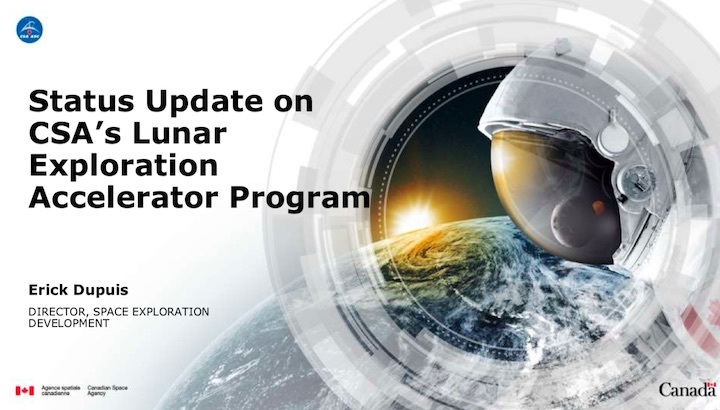7.06.2020

In a presentation to the space community in late May, the Canadian Space Agency outlined some of its latest lunar plans, including announcing it was in negotiations with NASA to send a rover to the moon.
The news came as the Canadian Space Agency (CSA) updated the space community in two virtual webinars hosted by CASI and SatCan.
Erick Dupuis, the Director of Space Exploration Development at the CSA prefaced the news in his SatCan presentation by saying “So here’s the scoop, drumroll …” and went on to say, “so what we intend to do underneath, is to fly a micro rover on a NASA CLPS (Commercial Payload Services) mission. That rover will host Canadian and US payloads. We are negotiating with NASA to secure a flight for that, hence the idea of hosting a US payload to be able to maximize the leverage that we’ll get for the Canadian investment.”
The news wasn’t unexpected as Canada has made no secret its desire to get a payload, and eventually a rover on the Moon. It is however, a confirmation that Canada intends to make this happen sooner rather than later, and likely within the current five year funded Lunar Exploration Accelerator Program (LEAP).
Rover size and instrumentation will depend on the negotiations with NASA along with what the CSA can fit into its current $150 million LEAP budget.
After consulting with the community over several years, it became clear according to Dupuis that “the vast majority of submissions was either for rovers or for rover subsystems.”
So the CSA is listening to the community and is proceeding down that path. However, Dupuis also pointed out that the CSA has other priorities in the LEAP program saying, “this is going to be the biggest small rover that we can afford under the LEAP budget, considering that we have a whole bunch of other things to do as well.”
The LEAP program has three focus areas, health, artificial intelligence (AI) and robotics technologies, and autonomous science payloads.
